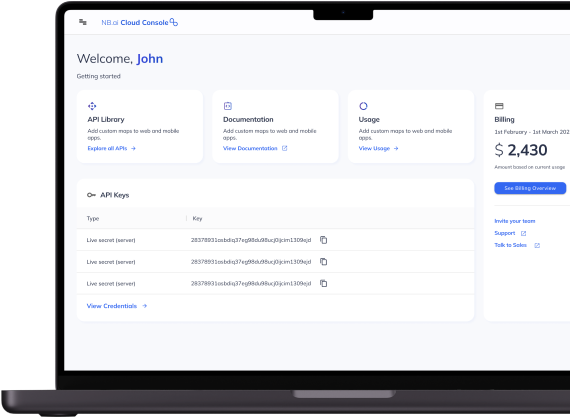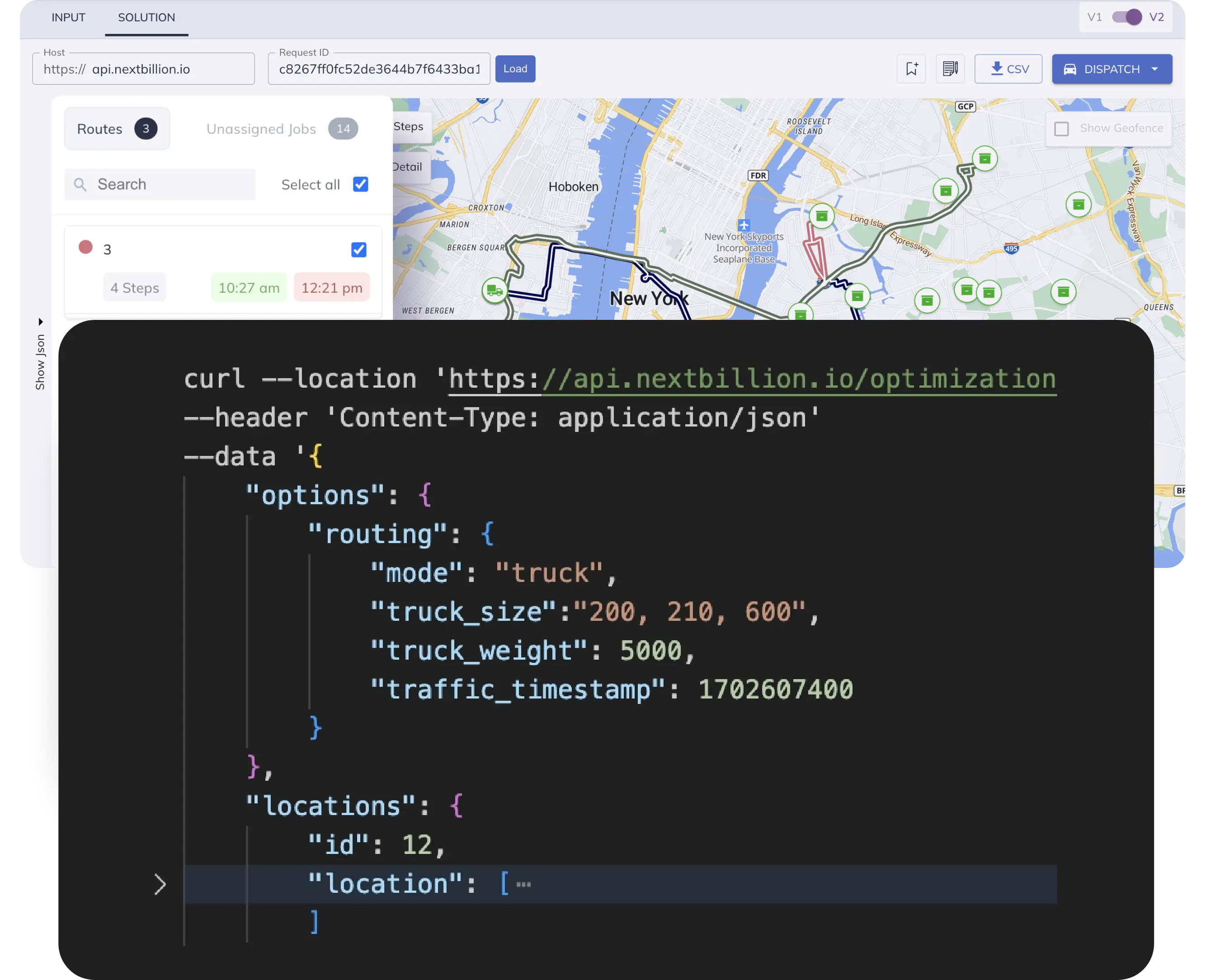Table of Contents
Environmental sustainability is now an urgent global imperative, and businesses across industries are re-evaluating their operations to fit this paradigm. It’s not hard to see why logistics and transportation companies have a lot to do in this respect, and for those looking to contribute to a greener future without compromising on operational efficiency, route optimization is the most powerful weapon in their arsenal.
In this article, we explore five route optimization best practices that’ll help you get the most out of your fleet in terms of productivity, profitability and environmental sustainability. Here they are:
Utilize Route Optimization Software
Firstly, and most importantly, it’s imperative to use route optimization tools and technologies to lower the environmental impact of your vehicular operations. Not even the best manual route planners in the world would be able to match the performance of modern routing solutions like NextBillion.ai’s Route Optimization API.
These tools are capable of accounting for a plethora of routing factors, from vehicle type, traffic flow and weather patterns to driver preferences, speed profiles, regulatory requirements, custom restrictions and much more. In just a matter of seconds, they can generate intricate routing sequences that best meet your specific needs, including minimizing vehicular emissions while maintaining operational efficiency.
Specialized solutions will help you eliminate more miles driven and time spent on road than any manual routing process, and they’ll do it faster, too.
Avoid Empty Miles
Empty miles — the distance covered by vehicles while carrying no load (and therefore generating no revenue) — are the bane of logistics operations, and minimizing them should be one of the primary targets of route optimization. They do no good for your business, your customers or the environment while driving up fuel consumption and expenses, labor costs, vehicle wear and greenhouse gas emissions.
NextBillion.ai’s Route Optimization API and other such advanced routing solutions can intelligently manage job distribution and route generation in such a manner as to help lower such inefficient empty running. Backhauling is another strategy to avoid empty miles.
To illustrate, let’s take the example of a truck carrying goods for delivery from a depot to its destination. Once delivery is completed, the truck must return to the depot, but doing so without any load would rack up empty miles.
The practice of arranging logistics such that the truck can haul goods from the destination back to the point of origin is known as backhauling. It ensures that empty running is kept to a minimum and that asset utilization is maximized.
Consider Multimodal Transportation
It’s common knowledge that the global scale of modern supply chains often necessitates the use of multiple modes of transport. Goods produced in one country may be transported to another by sea, air or road, at which point they might then be sent to distribution centers across the nation through a combination of trucks and trains.
But even within last-mile logistics, it can sometimes be beneficial to use a combination of transportation modes; vans, cars, motorcycles, bicycles, ferries, EVs, micromobility options and everything in between all have their unique advantages in varying environments.
Weigh the environmental impacts of each transportation mode against one another and, wherever possible, incorporate the use of more eco-friendly vehicles to get the right mix of sustainability and operational efficiency. Advanced route optimization solutions can generate routes based on various constraints that ensure the required level of operational performance on all fronts — cost, speed and emissions.
Implement Real-Time Telematics
Telematics systems transmit live data on various aspects of vehicle performance and driver behavior like speed, braking and adherence to optimal routes, empowering organizations to make informed real-time decisions that improve operational efficiency and sustainability.
There are a number of ways this can come into play. You can identify inefficient driving patterns like excessive idling or rapid acceleration, allowing for immediate intervention to lower fuel usage. Real-time alerts on engine issues, tire pressures, coolant levels, etc. enable preventive maintenance and reduce vehicle wear and tear.
You could enable notifications for deviations from planned routes, letting you take action to prevent potential disruptions that would cause extra emissions. Telematics platforms also often provide detailed reports and analytics, which feeds nicely into our next point.
Analyze Historical Operations Data
Historical data offers more than just a view of the past — it can serve as a guide for sustainable future practices, too. Regularly analyze historical operations data to get a deeper understanding of trends in customer preferences, consumption patterns, delivery frequencies, peak demand periods, bottlenecks and other relevant aspects of your business.
Armed with such detailed insight, you can now proactively incorporate this knowledge into the development of even better routes going forward, which translates into smoother operations and further drives down their environmental impact.
While this is far from an exhaustive list, it should set you well on your way to running a greener operation. It should also serve to give you a fair idea of how impactful route optimization can be in the promotion of sustainability and how that impact can be achieved in a number of different ways.
Want to see what NextBillion.ai’s Route Optimization API can do for your business and how well it fits? Schedule a demo with our team, we’d be happy to oblige!
Ready to get started?
Request a DemoTable of Contents







